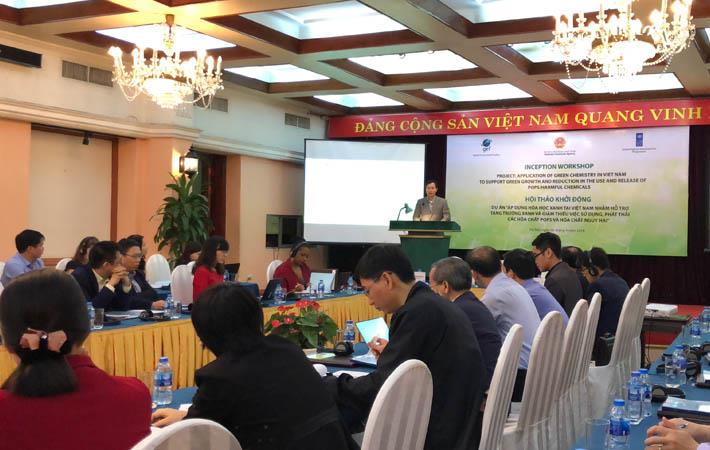The United Nations Development Program (UNDP) and the Vietnam Chemicals Agency, ministry of industry and trade recently held the inception workshop of a project called the ‘Application of Green Chemistry in Viet Nam to support green growth and reduction in the use and release of Persistent Organic Pollutants (POPs) and hazardous chemicals’.
The project will reduce the use of POPs and release of Unintentional Persistent Organic Pollutants (U-POPs) through the introduction of green chemistry in various industrial sectors in Vietnam including textiles. It aims to create an enabling environment for the introduction and the application of green chemistry to relevant sectors as part of Vietnam’s commitment to the Stockholm and the Minamata Conventions.The United Nations Development Program (UNDP) and the Vietnam Chemicals Agency, ministry of industry and trade recently held the inception workshop of a project called the 'Application of Green Chemistry in Viet Nam to support green growth and reduction in the use and release of Persistent Organic Pollutants (POPs) and hazardous chemicals'.#
"This is the first green chemistry project that aims to minimise the use and emission of chemicals that are not in the Multilateral Environment Agreements list to be implemented in Vietnam and in Southeast Asia. The project has three objectives: create a legal framework, raise awareness, and piloted practices that will help reduce emissions and the use of POPs,” said Dao Xuan Lai, UNDP assistant country director, head of the environment and climate change unit.
At the workshop, Christine Wellington Moore, UNDP programme advisor Montreal protocol unit/chemicals, Asia Pacific regional centre, introduced the overall project activities, result framework and components to be implemented in Vietnam. "Green chemistry is not new, but it is not easy to do, so we want to get stakeholders’ opinions present in the workshop today."
With the support of GEF and UNDP, this 3 year-project will also promote awareness on green chemistry, its benefits, and its guiding principles. These principles are: prevent waste; maximise atom economy; design less hazardous chemical syntheses; design safer chemicals and products; use safer solvents and reaction conditions; increase energy efficiency; use renewable feedstocks; avoid chemical derivatives; use catalysts, not stoichiometric reagents; design chemicals and products to degrade after use; analyse in real time to prevent pollution; and minimise the potential for accidents. (KD)
Fibre2Fashion News Desk – India
